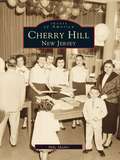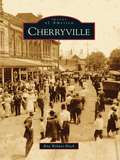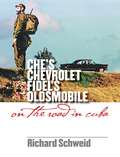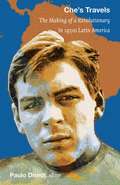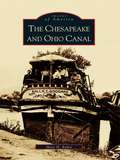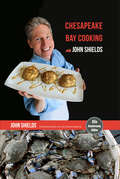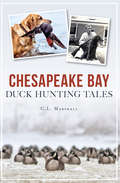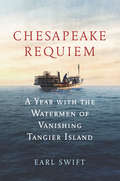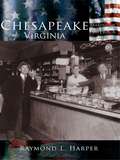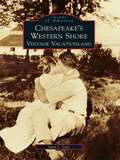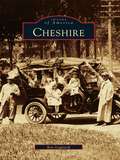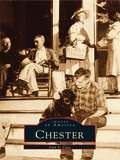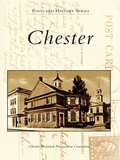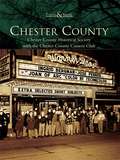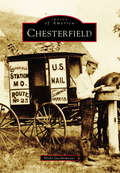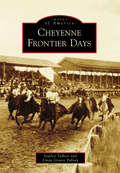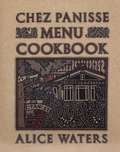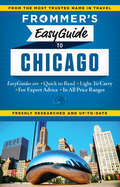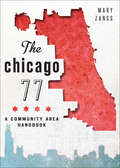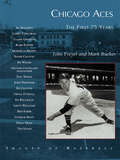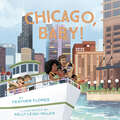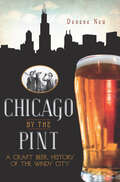- Table View
- List View
Cherry Hill, New Jersey
by Mike MathisUntil 1961, Cherry Hill was known as Delaware Township. From its inception in 1844, Delaware Township was an agrarian community dotted with gristmills, blacksmith shops, and taverns. Many farmers earned their livings by selling produce tothe Campbell's Soup Company, which had its canning plant in Camden until the 1980s. Delaware Township remained relatively quiet until the 1920s, when the first residential building boom resulted in neighborhoods such as Colwick, Erlton, Woodland, and Barlow. It was changed forever in 1942, when Vinelandbusinessman Eugene Mori opened the Garden State Park racetrack, which became a popular destination for war-weary workers. Mori also opened the Cherry Hill Inn in 1954. The old Cherry Hill Farm and its brilliant cherry trees would inspire the township'sresidents to change their community's name to Cherry Hill seven years later. Cherry Hill, New Jersey captures the growth of this charming suburban community from the early 20th century through the 1990s. See local landmarks that have long since vanished, such as the Latin Casino, the Cherry Hill Inn, the original Garden State Park, and the Cherry Hill Arena, as well as old farmsteads, street scenes, and the people that helped shape the community.
Cherryville
by Rita Wehunt-BlackCherryville, originally called White Pine, was renamed for the cherry trees lining the Old Post Road leading into town. It is located in the rolling hills of the Carolina Piedmont. The village was spun from the wilderness during the mid-1700s, when Scots-Irish and German immigrants settled the area around Beaver Dam and Indian Creeks. These settlers brought with them their languages, religions, music, and customs. The German tradition of shooting in the New Year with muskets and black powder continues today after 250 years. The area was a hotbed of Tory activity during the Revolutionary War, with Col. John Moore, the notorious Tory who was defeated at the Battle of Ramseur's Mill, living on Indian Creek. With the advent of the railroad in the 1860s, the first cotton mill in 1891, and the international firm of Carolina Freight Carriers Corporation in 1932, Cherryville has grown into a sophisticated, modern town.
Che's Chevrolet, Fidel's Oldsmobile
by Richard SchweidVintage U.S.-made cars on the streets of Havana provide a common representation of Cuba. Journalist Richard Schweid, who traveled throughout the island to research the story of motor vehicles in Cuba today and yesterday, gets behind the wheel and behind the stereotype in this colorful chronicle of cars, buses, and trucks. In his captivating, sometimes gritty, voice, Schweid blends previously untapped historical sources with his personal experiences, spinning a car-centered history of life on the island over the past century.Packard, Studebaker, Edsel, De Soto: cars long extinct in the United States can be seen at work every day on Cuba's streets. Havana and Santiago de Cuba today are home to some 60,000 North American cars, all dating back to at least 1959, the year the Cuban Revolution prevailed. Though hardly a new part has arrived in Cuba since 1960, the cars are still on the road, held together with mechanical ingenuity and willpower. Visiting car mechanics, tracking down records in dusty archives, and talking with car-crazy Cubans of all types, Schweid juxtaposes historic moments (Fidel Castro riding to the Bay of Pigs in an Oldsmobile) with the quotidian (a weary mother's two-cent bus ride home after a long day) and composes a rich, engaging picture of the Cuban people and their history. The narrative is complemented by fifty-two historic black-and-white photographs and eight color photographs by contemporary Cuban photographer Adalberto Roque.Vintage U.S.-made cars on the streets of Havana provide a common representation of Cuba. Journalist Richard Schweid, who traveled throughout the island to research the story of motor vehicles in Cuba today and yesterday, gets behind the wheel and behind the stereotype in this colorful chronicle of cars, buses, and trucks. In his captivating, sometimes gritty, voice, Schweid blends previously untapped historical sources with his personal experiences, spinning a car-centered history of life on the island over the past century. The narrative is complemented by fifty-two historic black-and-white photographs and eight color photographs by contemporary Cuban photographer Adalberto Roque.-->
Che's Travels: The Making of a Revolutionary in 1950s Latin America
by Paulo DrinotErnesto "Che" Guevara twice traveled across Latin America in the early 1950s. Based on his accounts of those trips (published in English as The Motorcycle Diaries and Back on the Road), as well as other historical sources, Che's Travels follows Guevara, country by country, from his native Argentina through Chile, Peru, Colombia, and Venezuela, and then from Argentina through Bolivia, Peru, Guatemala, and Mexico. Each essay is focused on a single country and written by an expert in its history. Taken together, the essays shed new light on Che's formative years by analyzing the distinctive societies, histories, politics, and cultures he encountered on these two trips, the ways they affected him, and the ways he represented them in his travelogues. In addition to offering new insights into Guevara, the essays provide a fresh perspective on Latin America's experience of the Cold War and the interplay of nationalism and anti-imperialism in the crucial but relatively understudied 1950s. Assessing Che's legacies in the countries he visited during the two journeys, the contributors examine how he is remembered or memorialized; how he is invoked for political, cultural, and religious purposes; and how perceptions of him affect ideas about the revolutions and counterrevolutions fought in Latin America from the 1960s through the 1980s. Contributors Malcolm Deas Paulo Drinot Eduardo Elena Judith Ewell Cindy Forster Patience A. Schell Eric Zolov Ann Zulawski
Chesapeake and Ohio Canal, The (Images of America)
by Mary H. RubinWith the founding of his Patowmack Company in 1785, George Washington first hoped to make the Potomac River a viable route to America's West. The skirting canals the company constructed around the Great Falls rapids at Harpers Ferry, Seneca, and Little Falls made the Potomac's rushing waters navigable. The Chesapeake and Ohio Canal Company was chartered by Maryland, Virginia, and Pennsylvania in 1828 to build a truly useful canal through to the Ohio Valley. President John Quincy Adams turned the first spadeful of dirt on Independence Day of 1828 for what was hailed as the "Great National Project" to connect Georgetown to Pittsburgh, Pennsylvania. The canal created an entire community of people and a way of life different from any other. At the height of operations, over 500 boats plied the 184.5 miles of the canal's waters. After many financial difficulties, competition from railroads, and the devastating effects of the Civil War as well as a flood, the canal went into receivership and was closed in 1924. In 1954, Supreme Court Justice William O. Douglas brought attention back to the canal with a fight to preserve the natural beauty for local residents. Today, the canal-listed as a National Historical Park-provides thousands with recreational opportunities, scenic nature trails, and gorgeous views.
Chesapeake Bay Cooking with John Shields
by John. ShieldsDiscover the cuisine and the character of the Chesapeake Bay with the twenty-fifth-anniversary edition of this collection of over 200 regional, seasonal recipes.Twenty-five years ago, Chesapeake Bay Cooking with John Shields introduced the world to the regional cuisine of the Mid-Atlantic. Nominated for a James Beard Award, the book was praised for its inspiring heritage recipes and its then-revolutionary emphasis on cooking with local and seasonal ingredients. Part history lesson, part travelogue, the book captured the unique character of the Chesapeake region and its people.In this anniversary edition, John Shields combines popular classic dishes with a host of unpublished recipes from his personal archives. Readers will learn how to prepare over 200 recipes from the Mid-Atlantic region, including panfried rockfish, roast mallard, beaten biscuits, oyster fritters, and Lady Baltimore cake. Best of all, they’ll learn everything they need to know about crabs?the undisputed star of Chesapeake cuisine?featured here in mouthwatering recipes for seven different kinds of crab cakes.Extensively updated, this edition includes a new chapter on Chesapeake libations, which features Shields’s closely held recipe for his notorious Dirty Gertie, an authentic Chesapeake-style Bloody Mary.“Long before it was trendy to serve sustainable, local, and organic food, Maryland native Shields was doing it at Gertrude’s, a modest modern restaurant tucked inside the Baltimore Museum of Art. This fall he reissued his prescient chronicle of the waterman’s way of life and traditional cooking on the mid-Atlantic coast. It includes how to “pick” steamed crabs (seasoned with Old Bay, natch), prepare country sides like Green Beans With Country Ham and Sautéed Peanuts, and make the quirky relish known as chow-chow.” —April Fulton, National Geographic’sfood blog, The Plate“John knows and loves the Chesapeake as only a native can. One of the best regional American cookbooks you’ll ever find.” —Gourmet“For those who are not familiar with the “good old down home” taste of cooking by a native of the Chesapeake Bay region, John Shields brings you an experience you'll never forget. For those of us who are fortunate enough to be a part of this region, Mr. Shields reminds us of the experience we’ll always remember.” —The Honorable William Donald Schaefer, former governor of Maryland
Chesapeake Bay Duck Hunting Tales (Sports)
by C. L. MarshallIt takes stubborn dedication and passionate optimism to brave the frosty, wet conditions for the chance to shoot ducks and geese. And yet the tradition continues every year as more than one million waterfowl occupy the waters of the Chesapeake. Whether you are setting decoys or watching the sun rise from a blind, hunting the bay is as challenging as it is rewarding. No one understands that better than the generations who have experienced it, from the goose pits of Rock Hall and Chestertown to the frothing whitewater of the Tangier Sound. Join author and hunter C.L. Marshall as he recounts more than forty years of stories and anecdotes chock-full of dogs, good friends and fast-paced waterfowl action.
Chesapeake Bay Walk
by David Owen BellFrom the Book Jacket: What Awesome Chesapeake does for older children, this book will do for youngsters ages four to nine-awaken them to the wonders of the Chesapeake Bay and the life in and around it. Written by the same author, Chesapeake Bay Walk takes young children and their parents or teachers on an unforgettable shoreline journey. On a stroll through its pages, they can find soft-bellied bullies, birds once hunted for their feathers, crabs older than dinosaurs, "bald" five-year-olds, and living prehistoric creatures made of water. David Owen Bell, author of Awesome Chesapeake and Chesapeake Bay Walk, has been involved in children's outdoor education for many years. Jennifer Heyd Wharton, a watercolorist, has also illustrated four children's books.
Chesapeake Requiem: A Year with the Watermen of Vanishing Tangier Island
by Earl SwiftTHE NEW YORK TIMES BESTSELLER A brilliant, soulful, and timely portrait of a two-hundred-year-old crabbing community in the middle of the Chesapeake Bay as it faces extinction. A BEST BOOK OF THE YEAR: Washington Post,NPR, Outside,Smithsonian,Bloomberg, Science Friday, Christian Science Monitor, Chicago Review of Books, and Kirkus "BEAUTIFUL, HAUNTING AND TRUE." — Hampton Sides • “GORGEOUS. A TRULY REMARKABLE BOOK.” — Beth Macy • "GRIPPING. FANTASTIC." — Outside • "CAPTIVATING." — Washington Post • "POWERFUL." — Bill McKibben • "VIVID. HARROWING AND MOVING." — Science • "A MASTERFUL NARRATIVE." — Christian Science Monitor • "THE BEST NONFICTION BOOK OF THE YEAR." — Stephen L. Carter/BloombergTangier Island, Virginia, is a community unique on the American landscape. Mapped by John Smith in 1608, settled during the American Revolution, the tiny sliver of mud is home to 470 hardy people who live an isolated and challenging existence, with one foot in the 21st century and another in times long passed. They are separated from their countrymen by the nation’s largest estuary, and a twelve-mile boat trip across often tempestuous water—the same water that for generations has made Tangier’s fleet of small fishing boats a chief source for the rightly prized Chesapeake Bay blue crab, and has lent the island its claim to fame as the softshell crab capital of the world.Yet for all of its long history, and despite its tenacity, Tangier is disappearing. The very water that has long sustained it is erasing the island day by day, wave by wave. It has lost two-thirds of its land since 1850, and still its shoreline retreats by fifteen feet a year—meaning this storied place will likely succumb first among U.S. towns to the effects of climate change. Experts reckon that, barring heroic intervention by the federal government, islanders could be forced to abandon their home within twenty-five years. Meanwhile, the graves of their forebears are being sprung open by encroaching tides, and the conservative and deeply religious Tangiermen ponder the end times. Chesapeake Requiem is an intimate look at the island’s past, present and tenuous future, by an acclaimed journalist who spent much of the past two years living among Tangier’s people, crabbing and oystering with its watermen, and observing its long traditions and odd ways. What emerges is the poignant tale of a world that has, quite nearly, gone by—and a leading-edge report on the coming fate of countless coastal communities.
Chesapeake, Virginia
by Raymond L. HarperAlthough fairly new on the American scene of cities, Chesapeake possesses a long history dating back to the early 1600s, when the first intrepid settlers began establishing farms on the fertile soils of Tidewater Virginia. Over the centuries, the region divided itself into larger cities, such as Norfolk and Portsmouth, a number of small towns, and rural county governments. Combating the expansion of the City of Norfolk, the leaders and citizens of SouthNorfolk and Norfolk County agreed to merge their governing entities in 1963 to create the new city of Chesapeake. Chesapeake, Virginia chronicles the history of the young city, nestled between the Elizabeth and Indian Rivers, and explores the various towns and villages that provide the area with its unique charm and character. From Berkley and South Norfolk to Deep Creek and Great Bridge, readers will journey into the past and hunt with the early American Indians that inhabited this lush landscape, toil with the colonial fathers as they began taming the land for future settlement, battle with the Continental troops as they defeated the British at Great Bridge, strain with the workers as they dig the historic Dismal Swamp Canal, and so onacross four centuries of struggle and prosperity into the twenty-first century.
Chesapeake's Western Shore: Vintage Vacationland
by Lara L. LutzIn 1952, the Chesapeake Bay Bridge opened for travelers in Maryland and created unprecedented access from the mainland to the Eastern Shore and the beaches of the Atlantic Ocean. Before then, the Chesapeake Bay itself was the "seaside" for residents of Baltimore and Washington, D.C. Popular bay-side vacation spots sprang up in Maryland during the late 1800s and early 1900s, and began to transform the rural fringes of the Chesapeake's Western Shore. People journeyed by railroad, steamboat, and automobile to escape the sweltering city summers and to swim, fish, and boat along the bay. Amusement parks, casinos, and dance halls enlivened the scene. Developers actively promoted the sale of summer cottages near resort areas that dotted the Patapsco, Magothy, Severn, and South Rivers, as well as the open bay, and laid the roots for many communities that still exist today. The images presented in this book evoke a shared heritage in the pleasures of the Chesapeake Bay and depict an era that triggered permanent changes along its shores.
Cheshire (Images of America)
by Ron GagliardiCheshire was established by farmers in 1694 as a parish of neighboring Wallingford. It is a classic New England town, built around a central green, graced by a white church with a tall, weather vane-topped, sentinel spire. Surrounded by some of the state's main highways of today, the town's location and people have shaped the long and rich history of this proud Connecticut community. Cheshire chronicles the growth of a small, Colonial farm town through the early twentieth century. The book is an album of its prominent citizens and families and of its noteworthy sites and events. Stories from two hundred years of its history come to life on its pages. They include the passage of the Amistad captives through Lock 12 on their way to stand trial in Hartford, the tale of the wandering Leatherman, and rumors of gold buried in the center of town. The book's centerpiece is a collection of the works of E.W. Hazard, early lensman, featuring his photography of Cheshire's parades, celebrations, and streetscapes, some seen here for the first time in print, in what may be the largest assemblage of his craft in one publication.
Chess Variations
by John GollonChess Variations is a must for all chess enthusiasts and an outstanding book which promises many hours of pleasurable entertainment for all others. With more than 40 variations of the popular board game, this book contains, among others, the oldest known form of chess (Chaturanga), the game created by Edgar Rice Burroughs and introduced in his Martian series (Jetan), as well as regional forms currently played in Korea, Malaya, Burma, Thailand, and Japan.Also included in the book are charts, diagrams, and sample games played by the author and his friends.
Chess Variations
by John GollonLearn the many varieties of chess the world over with this concise chess guide.Chess Variations is a must for all chess enthusiasts and an outstanding book which promises many hours of pleasurable entertainment for all others. With more than 40 variations of the popular board game, this book contains, among others, the oldest known form of chess (Chaturanga), the game created by Edgar Rice Burroughs and introduced in his Martian series (Jetan), as well as regional forms currently played in Korea, Malaya, Burma, Thailand, and Japan.For those games that require boards or pieces other than those issued in playing modern chess, the author presents guidelines on "The Construction of Sets." Also included in the book are charts, diagrams, and sample games played by the author and his friends.The excitement of playing these exotic chess variations increases with the knowledge of their historic beginnings as well as with the movements of such strange-sounding pieces as the Zarafah, Ashwa, and Firzan.
Chester (Images of America)
by Joan S. CaseChester, part of the Then & Now series, places the history of this North Jersey community in a new light by contrasting the old and the new. Vintage photographs are paired with contemporary ones, showing both the changed and unchanged elements of the scene. Zephaniah Drake's Brick Tavern, established after the opening of the Washington Turnpike, still stands in the center of town. But the Chester that was once an important iron-mining center, with 30 mines and two railroads, has disappeared from view.
Chester (Postcard History Series)
by Chester Historical Preservation CommitteeFrom the late 19th century until the mid-20th century, Chester was a bustling hub of industry, historic sites, tourist attractions, and entertainment. The first city established in Pennsylvania, Chester was famous for its many mills. The area was also home to a major shipbuilding center, the Sun Ship Corporation, as well as other industries, including the Chester Brewery and Blue Naphtha brand soap. The postcards in Chester showcase historic scenes of the city and highlight the long history of this dynamic community.
Chester County
by Chester County Historical Society Chester County Camera ClubThe history of Chester County, the fastestdeveloping county in Pennsylvania, is revealed by the uses of the land through the years, from the agriculture and industries of the nineteenth century to the specialty agriculture and service industries of today. Chester County visits the landscape and community that has endeared generations of residents. Rediscover Saturday night movies at the Warner Theatre in West Chester and root-beer floats at the Guernsey Cow in Exton. Visit the industries that built a strong economy in Chester County, such as Lukens Steel and the Sharples Separator Company, and learn about the site of a paper mill that is now a nature preserve for rare Brandywine bluebells.
Chesterfield (Images of America)
by Nicki JacobsmeyerArriving in 1815 by boat at Howell's Landing off the Missouri River was Chesterfield's founder, Col. Justus Post. Chesterfield, Missouri, is a distinct city because it did not grow from a single "named community" like most. It was once six separate towns, each with its own post office. The history of these communities and families that lived in them interweave to make a remarkable story that still lives on in the city of Chesterfield. Since the beginning, the town has strived to serve its community with exceptional schools, places of worship, public services, and businesses. The railroad, steamboats, and later the airport aided the economy, and the city began to thrive. Chesterfield became incorporated in 1988 with the support of many, including the chamber of commerce, businesses, renowned schools, and dedicated citizens. The city continues to grow because of the seeds that were planted over two centuries ago. The rich history is embedded in the people, streets, and buildings that stand today.
Cheyenne Frontier Days (Images of America)
by Starley Talbott Linda Graves FabianCheyenne Frontier DaysTM originated in 1897 after a few individuals conceived a signature event as a way to revive the thrilling incidents and pictures of life in the Old West. Their vision included a celebration that would bring visitors from all over the world to the capital city of Wyoming. From its beginnings, Cheyenne residents valued a rural lifestyle that inspired them to create a frontier festival. For more than a century, Cheyenne Frontier DaysTM has been the spirit, heart, and soul of the community and the cowboy way of life. Today, it has evolved into the world's largest outdoor rodeo and celebration of its kind.
Chez Panisse Menu Cookbook
by Alice Waters Linda P. GuenzelThis timeless addition to the Chez Panisse paperback cookbook library assembles 120 of the restaurant's best menus, including galas, festivals, and special occasion meals that have become such gustatory celebrations. A full range of menus is featured, from picnics to informal suppers. Line drawings.
Chicago
by Kate SilverAnswering an insistent demand for this guidebook from loyal readers of the Frommer's series, the Chicago residents among our writers have labored hard to capture the unique spirit of this dynamic city that every American must visit at some point of their lives. We cover establishments and attractions in all price ranges, but limit our actual selections to the best in each category. Thus, in the Easy Guide tradition,we don't drown the reader in superfluous detail, but reveal the preferences of our long-experienced authors.
The Chicago 77: A Community Area Handbook (History And Guide Ser.)
by Mary ZangsAn entertaining guidebook to the city&’s many communities with maps, landmarks, history, and fun facts.With over two hundred neighborhoods divided into seventy-seven community areas, Chicago offers a dazzling and daunting challenge to ambitious tourists and lifelong citizens. This blend of history and travel guide introduces you to them. Anyone who&’s never been to Chicago will be shocked to learn how big it really is. Did you know that Humboldt Park isn&’t even in Humboldt Park? Confused about the exact boundaries of West Elsdon or curious about the origins of the famous Second City Theater? In a handbook that is both an entertaining adventure and a methodical survey, Mary Zangs tackles all seventy-seven communities, providing maps, points of interest, and local perspectives for the many places Chicagoans call home.
Chicago Aces: The First 75 Years (Images of Baseball)
by Mark Rucker John FreyerAl Spalding was the first of many Chicago aces, leading the city's 1876 club to an inaugural National League Pennant with a 46-12 record and a whopping 528 innings pitched. Among the legendary pitchers to follow were Larry Corcoran, owner of two no-hitters with the White Stocking dynasty of the 1880s; Clark Griffith, who had six 20-win seasons in a row for a mediocre Orphans/Colts club in the 1890s; and "Rube" Foster, who dominated the Negro leagues of the early twentieth century. Also featured are Mordecai "Three Fingers" Brown, Eddie Cicotte, Ed Walsh, Grover Cleveland Alexander, and many others. In Chicago Aces: The First 75 Years, readers will discover the compelling stories of these great pitchers, highlighted by over 100 rare and striking images.
Chicago, Baby!
by Feather FloresExploring Chicago has never been so fun! Embrace adventure with this memorable rhyming picture book, the perfect gift for residents and visitors alike!Hello, Chicago, and hooray!Adventure waits for us today!From the shores of North Avenue Beach to the iconic CLOUD GATE (the Bean), there's so much to do and see in the bustling city of Chicago! With stops at the Art Institute, Grant Park, Navy Pier, and more, this spirited tour of the Windy City is just right for little readers—and their parents!—who are eager to explore. Get ready for adventure—an unforgettable Chicago experience awaits!A REGIONAL CELEBRATION FOR RESIDENTS: Featuring some of Chicago's most popular foods, well-known destinations, and family-friendly attractions, this book makes a great gift for (or from!) any Chicagoan looking to pass on a love of their city to their little ones.MEMORIES FOR LITTLE TRAVELERS: With so much to see and do, travel can feel overwhelming for toddlers—but telling the story of a place you've been (or are planning to visit) can make the experience so much more fun and accessible!SWEET AND SATISFYING READ-ALOUD: Rhyming text and short, easy-to-understand sentences make this upbeat picture book an excellent candidate for story time, just right for rereading—and for reliving the adventures little explorers and their families have enjoyed together in the city!GO-TO GIFT FOR TODDLERS ON THE GO: This lighthearted introduction to the Windy City is a gift-giver's dream, offering a wonderful way to share meaningful adventures with the little readers they love.Perfect for:• Parents, grandparents, and caregivers of children who live in Chicago• Museum-goers and travelers to the Chicago area• Teachers and librarians who live in Chicago• Gift-givers looking for a fun and quirky regionally inspired present
Chicago by the Pint: A Craft Beer History of the Windy City (American Palate Ser.)
by Denese NeuPerfect for &“beer nerds and history buffs . . . This quirky volume . . . uses Chicago-area breweries as an entry point into the city s broader history&” (Time Out New York). Chicago is full of colorful history, local legends, and great beer—and they all converge in this pint-sized history of brewing and drinking in the Windy City. Author Denese Neu uses the local craft brewing industry as a gateway to Chicago&’s storied past, with tales designed to be read in the time it takes to enjoy a pint or two. So belly up to the bar and learn how Chicago&’s best brews were born, and how some of its historic breweries and brewpubs are connected to notable figures from sports legends to bank robbers and more.
